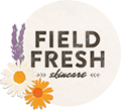
September has brought a sudden change in the weather. Wet and stormy times bring a hazard to foraging. Pick a calm moment to venture to the hedgerows. There are plenty of treasures to gather now to use fresh or to prepare for your skincare larder. Your future self will thank you.
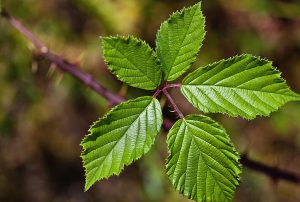
1. Bramble leaf – Rubus fruticosus
The bramble fruits came so early this year. We’d normally say don’t gather them after 29th September; this year you’ll be lucky to find them by then, all will be over. While I’m sure the lusciousness of a deeply hued blackberry holds promise for natural lip balm colouring, and its store of vitamin C would surely add punch to an exfoliating face mask, I encourage you to also gather a few blackberry leaves – more accurately called bramble leaves. These are packed full of vitality which they’re happy to lend to our skin. Helpfully astringent (chew a leaf and notice your mouth drying up), you can pop a few in the bath and notice their skin brightening and tightening effect. Lovely to reduce wrinkles and increase shine.
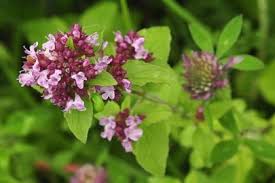
2. Marjoram – Origanum marjorana
Sometimes called the ‘virtuous gentlewoman’ marjoram is loved for her sweet herby aroma, often included among strewing herbs. Her essential oil will support you when tired and it is said if you have marjoram in your garden you have no need to be ill, simply eat a little of this aromatic herb every day. Best to gather and dry stocks for your winter supplies, ideally before they flower. By this time in the year marjoram leaves may be a little bitter for eating (though you can reduce the bitterness by removing her flowers), but they’re still great for skincare. A few infused in hot water and then cooled will make a refreshing, sweet smelling toner. Make a stronger infusion if you’d like her gentle help revitalising and toning hair and scalp. Gather supplies now and dry them in a warm dry place. The dried, crumbly leaves can be used throughout winter until she flourishes again in spring.
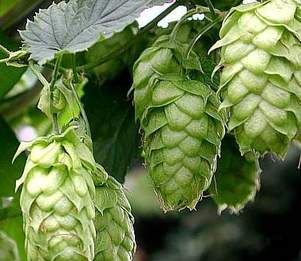
3. Hops – Humulus lupulus
The latin name for hops always makes me smile. Not surprising she can bring a little gentle joy to your day. I mostly refer to herbs in the feminine but for hops this is a necessity – it’s the juicy, cone-shaped fruits of the female hop plants that you want to look out for. A dioecious plant, the males (which have long straggly flowers) are necessary for reproduction, but less sought after for practical applications. Best known for the flavour they bring to beer, hops can also be made into a calming tea, good for bed time. A distillation of the newly opened flowers provides an astringent and pleasantly scented skin lotion, and packing the sweetly soporific dried flowers into a pillow can help you get more beauty sleep.
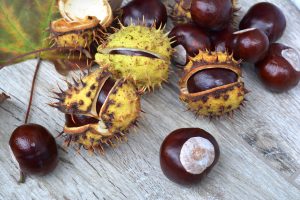
4. Horse chestnut – Aesculus hippocastanum
The spiky outside of horse chestnut’s seed doesn’t seem an obvious skincare ingredient. But inside are the shiny, smooth conkers. These firm seeds contain aescin, an anti-inflammatory compound which helps circulation by toning vein walls. To benefit from this, infuse chopped conkers in oil and use this directly or as an ingredient in a balm or cream. Conkers also contain saponins – the natural soap-like complex chemicals that we find in a number of plants. Use them to make soap for handwashing and clothes washing.
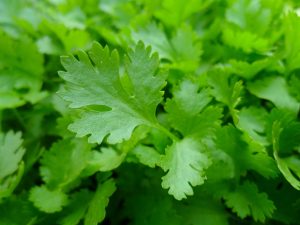
5. Parsley – Petroselinum crispum
The skin tonic on your windowsill! Parsley is a lovely summer herb, but we can also keep a plant going thoughout winter by looking after it in a pot on a sunny windowsill. Ideal to use fresh – crush the leaves to extract juice, or infuse in boiling water. Add parsley to a face pack with other strong green herbs such as mint, nettle, dandelion and comfrey, she’s great to cleanse and condition. Parsley will stimulate circulation helping skin release impurities, lightening and brightening complexion – a bonus for sallow or blotchy skin. She can also be used as a helpful treatment to reduce thread veins and bruises, apply as a poultice. You may have heard the trick of eating parsley to freshen breath, this odour eating property means she’s good to include in a deodorant, she is a natural cleanser.
LIKE THE IDEA OF GATHERING YOUR OWN SKINCARE INGREDIENTS? …
… you might like to read some more.
For everything you need to know to get started with Blend-it-Yourself skincare using the plants that grow around you, see Vital Skincare by Laura Pardoe. This book takes you through the techniques and ingredients you’ll need to know to make your own natural skincare.
